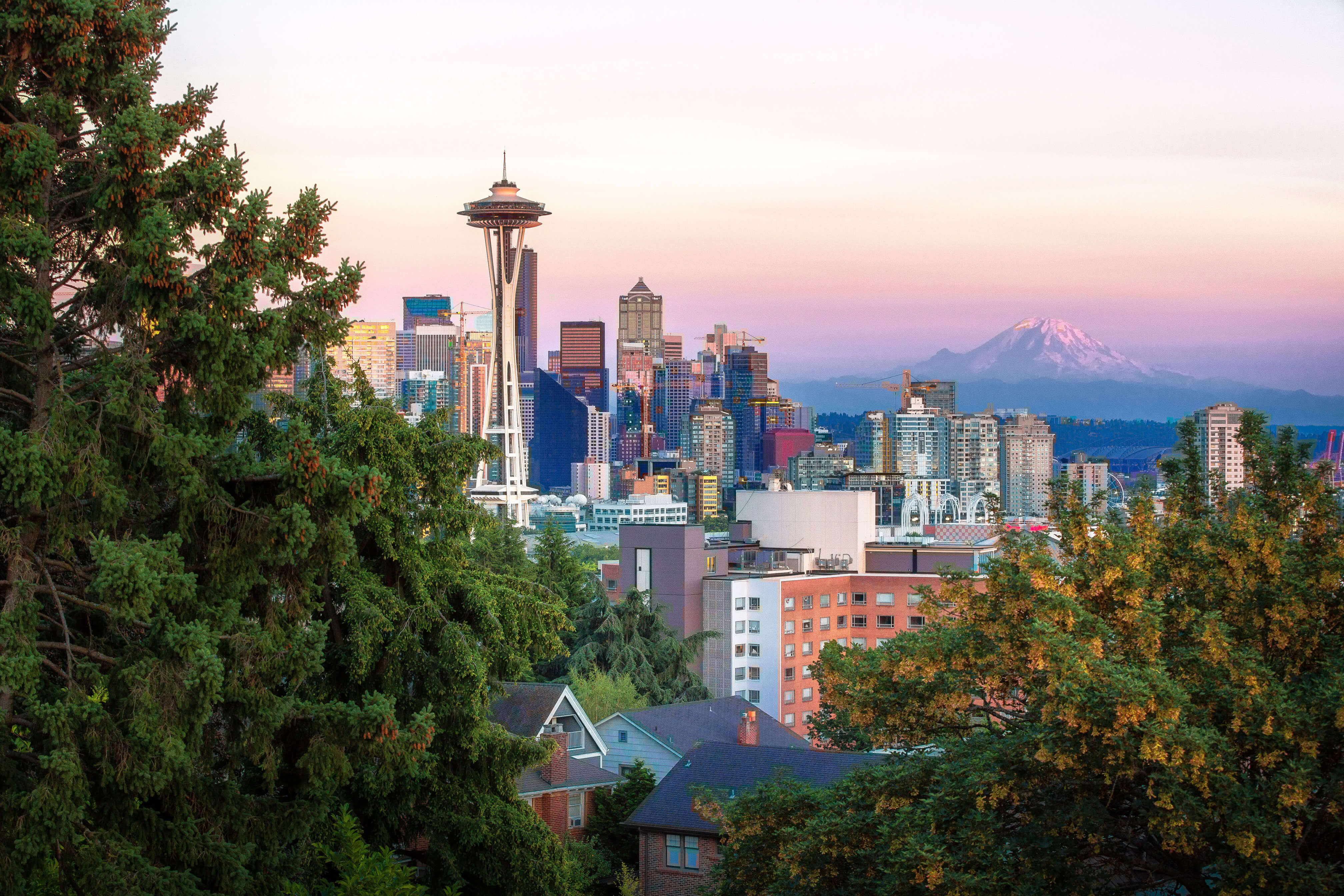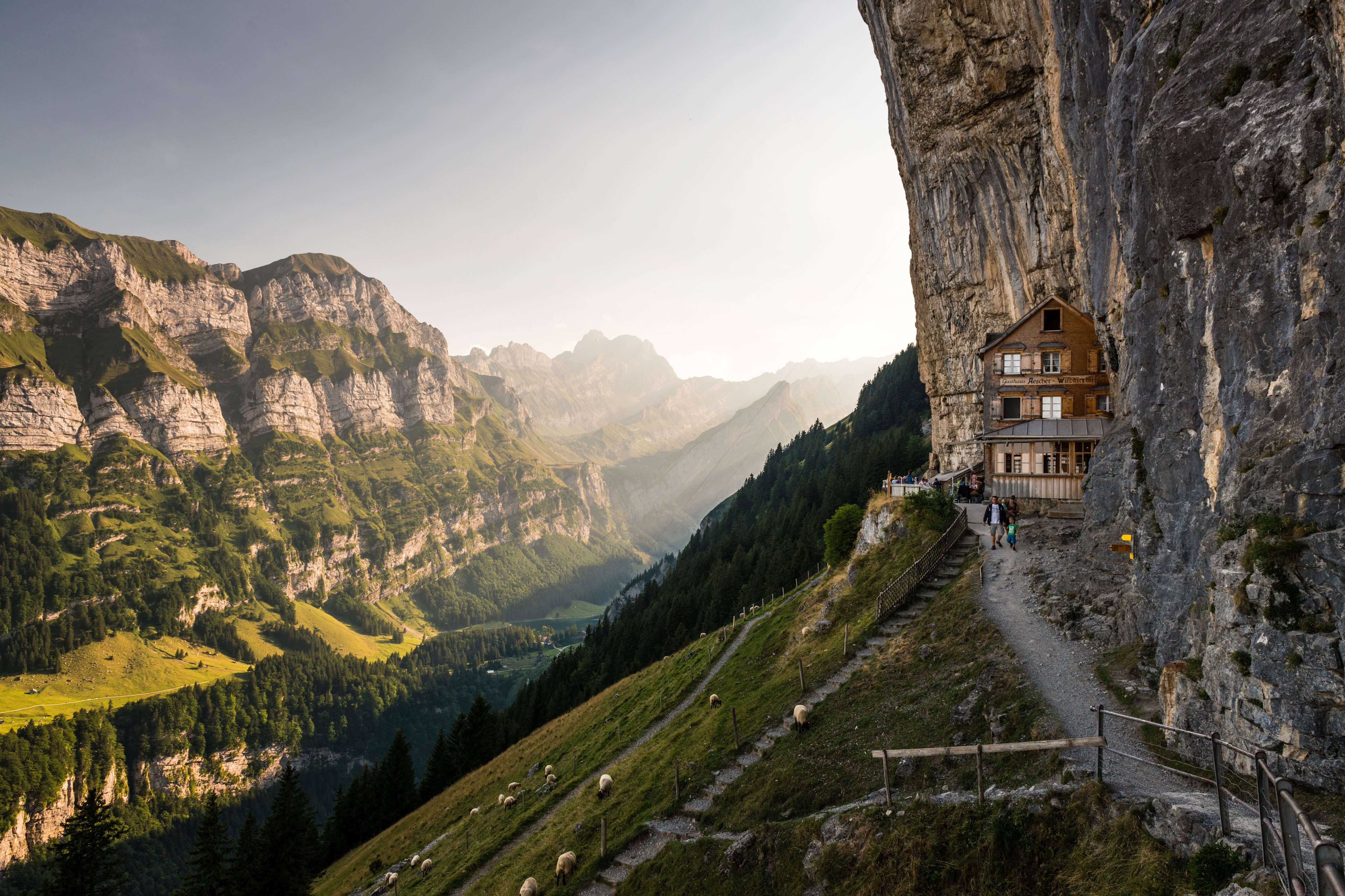1/1 Oops. Incorrect.
0%
0pts Earned
0/1correct
20/20
Where can you find a place called Frying Pan Lake?
New Zealand’s Frying Pan Lake lives up to its name. The water is usually between 113 and 131 degrees Fahrenheit (or hotter), and the lake releases gasses that make the lake look like it’s boiling. Located in the Waimangu Volcanic Rift Valley near Rotorua, the lake was formed when nearby Mount Tarawera erupted in 1886 — New Zealand’s most destructive volcanic eruption of the modern era.
Source: Mental FlossIndonesia
13%
Mexico
14%
Japan
8%
New Zealand
65%
19/20
Lake Havasu lies on the border of Arizona and which other state?
Nicknamed “Arizona’s West Coast,” Lake Havasu is located along the border with California. It is a reservoir along the Colorado River, created by a dam that opened in 1938. Lake Havasu is a popular fishing, boating, and vacation destination, with more than 400 miles of coastline. The lake's largest city, Lake Havasu City, is also home to an iconic bridge — the same London Bridge that stood over the River Thames for more than 600 years.
Source: Go Lake HavasuNevada
30%
New Mexico
23%
California
41%
Utah
6%
18/20
Which of these lakes is shared by Germany, Austria, and Switzerland?
Lake Constance is in an unusual position, quite literally. The popular tourist destination lies between Austria, Switzerland, and Germany. While the divisions between those countries are clear on land, they’re less clear when it comes to the water. The international borders inside Lake Constance have never been settled, and each nation has a different opinion on them.
Source: Condé Nast TravelerLake Constance
18%
Lake Geneva
66%
Lake Como
8%
Lake Wörthersee
8%
17/20
Which lake has the most fish species in the world?
Situated between three countries — Malawi, Mozambique, and Tanzania — Lake Malawi is home to more than 1,000 distinct fish species, more than any other lake in the world. And some scientists estimate that figure may be underselling it — there could be more than 2,000 total species that potentially live in its waters, and new ones are discovered regularly.
Source: The ConversationGreat Salt Lake, North America
3%
Lake Lagoda, Europe
8%
Lake Malawi, Africa
47%
Lake Titicaca, South America
42%
16/20
What is the deepest lake in North America?
Named for the the Slavey First Nations peoples of Canada, Great Slave Lake reaches a depth of 2,020 feet. The massive lake in the Northwest Territories is about the size of Belgium, and it remains frozen for about eight months of the year. The ice is so thick in some places that locals can actually drive across it.
Source: NASA Earth ObservatoryCrater Lake
84%
Great Slave Lake
6%
Quesnel Lake
1%
Lake Tahoe
9%
15/20
What makes the water in Australia’s Hutt Lagoon appear bright pink?
Hutt Lagoon is a marine salt lake located near the Indian Ocean on the coast of Western Australia, about five hours north of Perth. Its pink Pepto-Bismol-like coloring comes from a naturally occurring, carotenoid-producing algae that is a great source of Vitamin A. Hutt Lagoon is a pinkish color year-round, but its color is most vibrant on sunny days.
Source: Australia's Coral CoastAlgae
66%
Sand
8%
Pollutants
2%
Salt deposits
24%
14/20
What makes Venezuela’s Lake Maracaibo famous?
They say lightning never strikes the same place twice, but if it were to happen anywhere on Earth, we’d place our bets on Venezuela’s Lake Maracaibo. One of South America’s largest lakes, it is home to one particular square kilometer that is struck by lightning more than any other place on the planet. A NASA satellite observed 233 bolts on average every year from 1998 to 2013 in this square kilometer.
Source: Science MagazineHalf freshwater, half saltwater
34%
Most biodiverse lake
19%
Most lightning strikes of any lake
40%
Oldest lake on Earth
7%
13/20
After Superior, which is the second-largest of the Great Lakes?
Lake Huron, named by early French explorers in the region, is bordered by the Canadian province of Ontario to the north and east, and the state of Michigan to the south and west. The lake has a maximum length of 206 miles, a maximum width of 183 miles, and a surface area of just over 23,000 square miles.
Source: World AtlasLake Michigan
61%
Lake Huron
24%
Lake Erie
4%
Lake Ontario
11%
12/20
The largest lake in Africa, Lake Victoria has roughly 1,000 what?
Lake Victoria spans 26,600 square miles in Uganda, Tanzania, and Kenya. This massive body of water is home to approximately 1,000 islands, ranging from tiny dots of land to larger inhabited islands. Mfangano Island is the largest in the lake. With a population of around 20,000, it features 18,000-year-old rock paintings and unique animal species, including monitor lizards and vervet monkeys.
Source: Governors' CampHot springs
4%
Native species of fish
22%
Waterfalls
44%
Islands
30%
11/20
Lake Bled in Slovenia features a picturesque island famous for its what?
Situated at the foot of the Julian Alps, this glacial lake features only one island, 350-acre Bled Island. It is home to several buildings and, most famously, a small church that dates back to the 17th century. The church's picturesque 171-foot tower can be seen from the lakeshore. The traditional form of transportation to the island is by wooden flat-bottomed boat called a “pletna,” resembling a Venetian gondola boat.
Source: BritannicaWild brown bears
7%
Extinct volcano
12%
Historic church
67%
Roman ruins
14%
10/20
Lake Assal is the lowest point on which continent?
Sitting approximately 500 feet below sea level, Lake Assal is a saline lake located inside a volcanic crater in the East African country of Djibouti. It is the lowest point on the African continent and also one of the lowest points on Earth’s surface, after the Sea of Galilee and the Dead Sea. Lake Assal is also one of the saltiest bodies of water on the planet — its waters are about 10 times saltier than seawater.
Source: Culture TripAntarctica
18%
Asia
22%
Africa
35%
Australia
26%
9/20
Niagara Falls is located between which two Great Lakes?
Niagara Falls connects two of North America’s Great Lakes, Lake Erie and Lake Ontario. The Niagara River feeds three waterfalls: American Falls and Bridal Veil Falls on the U.S. side and Horseshoe Falls on the Canadian side. The river serves as the international border between the U.S. and Canada. Approximately 3,160 tons of water flows over Niagara Falls every second.
Source: Niagara Falls State ParkLake Erie and Lake Ontario
81%
Lake Superior and Lake Michigan
8%
Lake Champlain and Lake Ontario
10%
The Great Salt Lake and Lake Erie
0%
8/20
Italy’s glamorous Lake Como is shaped like what?
Lake Como is favored by celebrities and locals alike for its beauty and serenity. Shaped like an upside-down “Y,” the lake stretches through the Lombardy region of Italy in the foothills of the Alps. The three branches of the lake are roughly equal in length, with the northern branch stretching towards Colico, the southwestern to Como, and the southeastern to Lecco.
Source: BritannicaAn upside-down “Y”
46%
A ring
4%
A sideways “H”
5%
A horseshoe
45%
7/20
Which is NOT one of the "Great Lakes" of Africa?
Lake Victoria, Lake Malawi, and Lake Tanganyika are collectively considered the Great Lakes of Africa. Together, they contain 27% of the world's freshwater. They are the world's third, sixth, and ninth-largest lakes by area, respectively. The giant bodies of water are found in East Africa's Great Rift Valleys region.
Source: Global Great LakesLake Malawi
9%
Lake Tanganyika
7%
Lake Eyre
69%
Lake Victoria
14%
6/20
The deepest lake in the world, Lake Baikal, is in which region of Russia?
Located in the mountains of southern Siberia, just north of the Mongolian border, Lake Baikal is so large that it contains 20% of the world’s fresh water. It’s the oldest freshwater lake in the world, dating back 20 to 25 million years. Lake Baikal is also home to the world’s only true freshwater seal species, aptly named Baikal seals.
Source: BritannicaUral
22%
Siberia
55%
Central Russia
11%
Volga
12%
5/20
Besides “monster” sightings, Loch Ness is also known as the U.K.’s what?
Tales of the elusive Loch Ness Monster have been told for centuries, but “Nessie’s” home is quite special. “Loch” is the Gaelic word for lake, which is just what Loch Ness is — a large and very deep freshwater lake. Its depths reach almost 800 feet, so Loch Ness doesn’t freeze during the winter despite the bitter cold of the Scottish Highlands.
Source: UK Center for Ecology & HydrologyBest ice skating lake
2%
Biggest human-made lake
11%
Deepest saltwater lake
20%
Largest lake by volume
67%
4/20
Lake Titicaca is said to be the birthplace of which ancient civilization?
The Incan Empire flourished in the Andean region of South America from around 1400 to 1533 CE. Located on the border of present-day Peru and Bolivia, Lake Titicaca was a sacred space to the Incan people. They believed that their sun god was born on this island, and gave it offerings, building more than 80 temples on Isla del Sol (Island of the Sun) in the southern region of the lake.
Source: National GeographicMayan
28%
Aztec
27%
Egyptian
5%
Incan
41%
3/20
Moraine Lake is a glacially fed, turquoise body of water found where?
Often depicted on screensavers and mouse pads, the shimmering blue waters of Moraine Lake are set against a backdrop of snow-capped peaks in Alberta’s Banff National Park. The lake is located at over 6,000 feet above sea level. Because the lake is glacially fed, it doesn’t thaw until June, but when it does, the water stays a beautiful pastel blue all summer long.
Source: Banff & Lake Louise TourismSwiss Alps
29%
Canadian Rockies
63%
Great Smoky Mountains
4%
Adirondack Mountains
4%
2/20
Lake Tahoe straddles the border of which states?
The largest alpine lake in North America, Lake Tahoe is located on the border of California and Nevada, high in the Sierra Mountains. Its name is derived from the Washoe word “tahoe,” which means “big water.” Tahoe is the third-deepest lake in North America and the tenth-deepest in the world. Surrounded by vacation rentals, casinos, snowsports, and fishing, Lake Tahoe is a year-round tourist draw.
Source: BritannicaCalifornia and Oregon
3%
California and Nevada
89%
Nevada and Utah
7%
Utah and Idaho
1%
1/20
Which U.S. state is home to the Great Salt Lake?
With the state capital being Salt Lake City, it’s no surprise that the Great Salt Lake lies in Utah. Called “America’s Dead Sea,” the Great Salt Lake is the largest saltwater lake in the Western Hemisphere. The lake’s salinity levels range from 5 to 27%. Although only brine shrimp, brine flies, and algae survive in the waters, the lake serves as a habitat and bird refuge for migratory and native birds.
Source: Live ScienceColorado
2%
Michigan
6%
Utah
91%
Washington
1%
Play Quizzes By Category
Play A Trending Quiz
Trending, related and recent quizzes you may be interested in






